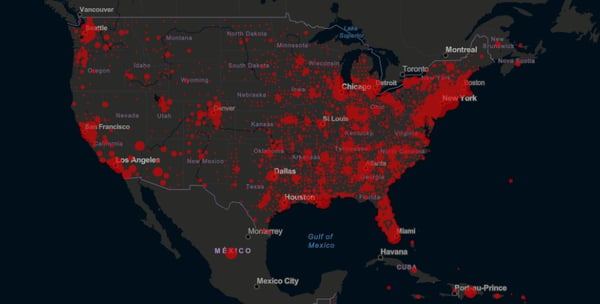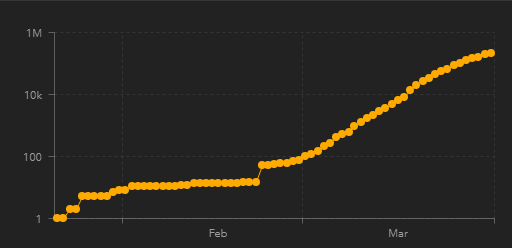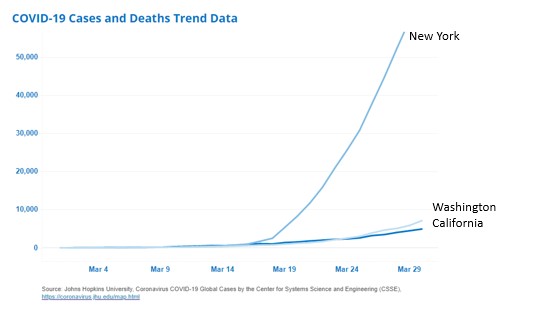COVID-19 Update: Pace Yourself (And take care of yourself)
Apr 06, 2020

By Dr. Alesia Greene
The President’s Coronavirus Task Force presented some sobering information to the nation this week. As promised, testing has continued to accelerate to approximately 100,000 tests per day giving the experts better information on how prevalent the virus is within our communities.
The stark reality that has come into focus is that we are past public health containment strategies and have moved on to a mitigation strategy with an estimated 100,000-240,000 deaths. Most states have some version of a stay-at-home order in alignment with the task force’s extension of “Stop the Spread” for COVID-19 until April 30th.

Source: Center for System Science and Engineering (CSSE) at Johns Hopkins University
Medi-Share has already started to see the increased use of MDLive for health advice regarding cold and flu like symptoms and some bills submitted to sharing for COVID-19 related testing. Approximately 15 members have been referred for further evaluation.
To assist our community during this difficult time, the program is waiving provider fees for members who use MDLive and are referred to the doctor’s office or emergency room. I want to continue to emphasize that testing should still be prioritized for those with fever >100.4 AND cough/shortness of breath. Average testing costs should range between $35-$53 dollars. Beware, as some testing locations are charging upwards of $200.
As we continue towards the peak of the curve, higher volumes of sick patients will be accessing emergency care with potential to overwhelm our emergency rooms and hospitals. We all can do our part by treating our illness at home and only seeking care if we are severely ill or having trouble breathing. At this time, since there is no treatment or vaccination, “knowing if you are positive” has limited value since WE ALL SHOULD BE STAYING AT HOME EXCEPT FOR ESSENTIAL TASKS, or if you work in a critical infrastructure industry (healthcare services, pharmaceutical, and food supply).
Adjustments to stay-at-home orders have forced us to adapt in virtually every aspect of our daily lives. Working from home, schooling from home, and communication have shifted to technology―challenging us to remain connected with our fellow man.
I know for many, anxiety, frustration, and boredom can often be stoked by our consumption of news and social media, but we must pace ourselves. Early indicators are showing that we are making a difference. The rate of rise of new cases is not as steep as the early weeks of the pandemic and those “hot spot” states who have done the best at social distancing are doing even better:
Rate of Rise of New Cases in the US

Source: Center for System Science and Engineering (CSSE) at Johns Hopkins University

Source: Center for System Science and Engineering (CSSE) at Johns Hopkins University
So, take care of yourself. A daily routine can help a lot to keep you healthy. Staying on track with waking and sleeping; try to avoid varying by more than one hour each day. Getting showered and dressed to start your day, while including regular physical activity of at least 1 hour, can relieve tension and stress from sitting all day. Taking time to read and meditate on daily scripture can energize your spirit while relaxing your anxiety.
Connect with your loved ones in your home, including your pets! A hug releases oxytocin, a chemical in our bodies that naturally improves happiness and decreases stress. Finally, take a break from news and social media or limit yourself to 30 minutes once a day. Yes, it is important to know what’s going on, but you are already doing your part to impact the bigger picture. Constantly thinking, reading, and listening to news about COVID-19 is not a way to stay healthy as we most likely have 3-4 months ahead of us before we can start back towards “normal.”
“As a mother comforts her child, so will I comfort you;” Isaiah 66:13
